Understanding SEO Basics, Part 2: How to Find the Right Keywords for Your Content
In this second part of the series, we will explore keyword research and teach you how to discover suitable keywords for your website.

Previously, in part 1 of the series, we introduced you to SEO Basics. However, this second part elaborates on the concept of keyword research and its crucial elements in identifying appropriate keywords for your content.
Moreover, this article illustrates the various ways to research keywords and outlines the necessary steps to accomplish this task.
So, let us delve into it!
Table of Contents:
1. What is keyword research?
2. Steps to conduct keyword research
2.1. Pick a reliable tool
2.2. List keyword ideas and top 10 competitors
2.3. Research "seed” keywords and competitors
3. Conclusion
What is Keyword Research?

SEO professionals use the term "Keyword Research" to describe the process of finding topics that users are interested in reading by searching for them on search engines. Moreover, SEO pros use different tools to perform keyword research.
The most popular tools for this task are SEMRush and Ahrefs. These tools have multiple features that enable you to find terms that users search for on popular search engines, especially Google and Bing.
When researching keywords using SEMRush or Ahrefs, their proprietary algorithm provides valuable information that helps you make informed decisions.
One of the valuable pieces of information you receive is the monthly search volume (by country) and the keyword difficulty - a number between 0 and 100, with 0 being the least difficult and 100 the most difficult.
In addition, these tools offer various keyword filtering options. For instance, you can filter by word count and phrases.
3 Simple Steps to Conduct Successful Keyword Research

Whether you’ve engaged in keyword investigation before or not, if you follow my 3 steps below, you’ll have thousands of great keywords in no time.
Step 1: Pick a Reliable SEO Tool
Earlier, I mentioned that the two most popular keyword analysis tools are SEMRush and Ahrefs. However, there are other keyword research tools you can choose from.
Before you decide on a tool, here are some things you must consider:
- Keyword Volume: check that you can filter by the monthly search volume of keywords by country. Getting the monthly search volume will help you decide whether it is worth targeting a keyword.
- Word Count: you need to be able to filter keywords by word count - that is, how many words are on a keyword. Generally, the longer a keyword (longer keywords are known as “long tail” keywords), the better. This is because long-tail keywords provide better customer search intent.
- Keyword Filtering: another way to determine customer search intent is to filter keywords by keyword phrases. For example, if a user searches for “how to sell on eBay,” the intent is more obvious than a search for "eBay fees."
So, when you perform keyword analysis, ensure that your tool has the option to filter by phrases.
- Keyword Difficulty: different tools develop a custom algorithm that considers multiple known search engine ranking factors to create a Keyword Difficulty tool. These tools generally rank keywords on a scale of 0 to 100, with 0 indicating easy to rank and 100 suggesting extremely difficult to rank.
- Competitor Analysis: finally, ensure that the keyword tool can perform competitor analysis and competitor gap analysis. By performing competitor keyword analysis, you can "reverse engineer" your competitors' website domains to determine the keywords they're ranking for.
This will allow you to target those keywords in your content.
Step 2: List Keyword Ideas ("Seed” Keywords) and Top 10 Competitors
After you have decided on the tool you want to use to find keywords, the next step is to list “seed” keywords. These are any phrases in your niche you believe users may be searching for.
If you’re not sure where to start, you can use Google’s keyword completion tool to start gathering ideas.
For instance, if I want to get “seed” keyword ideas for the word “ebay,” I can enter it on Google Search and press the enter key on my keyboard.
Then, I’ll pick keyword ideas from the keywords Google suggestions.

Furthermore, you can find more ideas by entering the letters a (next to ebay), followed by a space.

Repeat the process by adding b, c, d, etc, to generate more keyword ideas. Finally, compile them in a text file or your favorite text editor.
After you have compiled enough seed keyword ideas, your next step is to list at least 10 of your top competitors.
Not sure where to find your competitors? Start from Google.
For example, if I want to find competitors for a travel blog, I can search “best travel blogs.” Then, I’ll use SimilarWeb.com to get the estimated monthly search traffic for the websites.
The purpose of checking the monthly search volume is to help you decide on competitors that will make it to your “top 10 competitors” list.
I recommend adding only websites with minimum monthly search traffic of 500,000.
Step 3: Research "Seed” Keywords and Competitors
Armed with your “seed” keyword ideas and top 10 competitors list, it’s time to get your hands dirty!
Starting with your keyword ideas list, pop each of them into your chosen keyword research tool.
I use Ahrefs, so I will use this tool to show you how this works.
Ahrefs has a tool called Keyword Explorer.
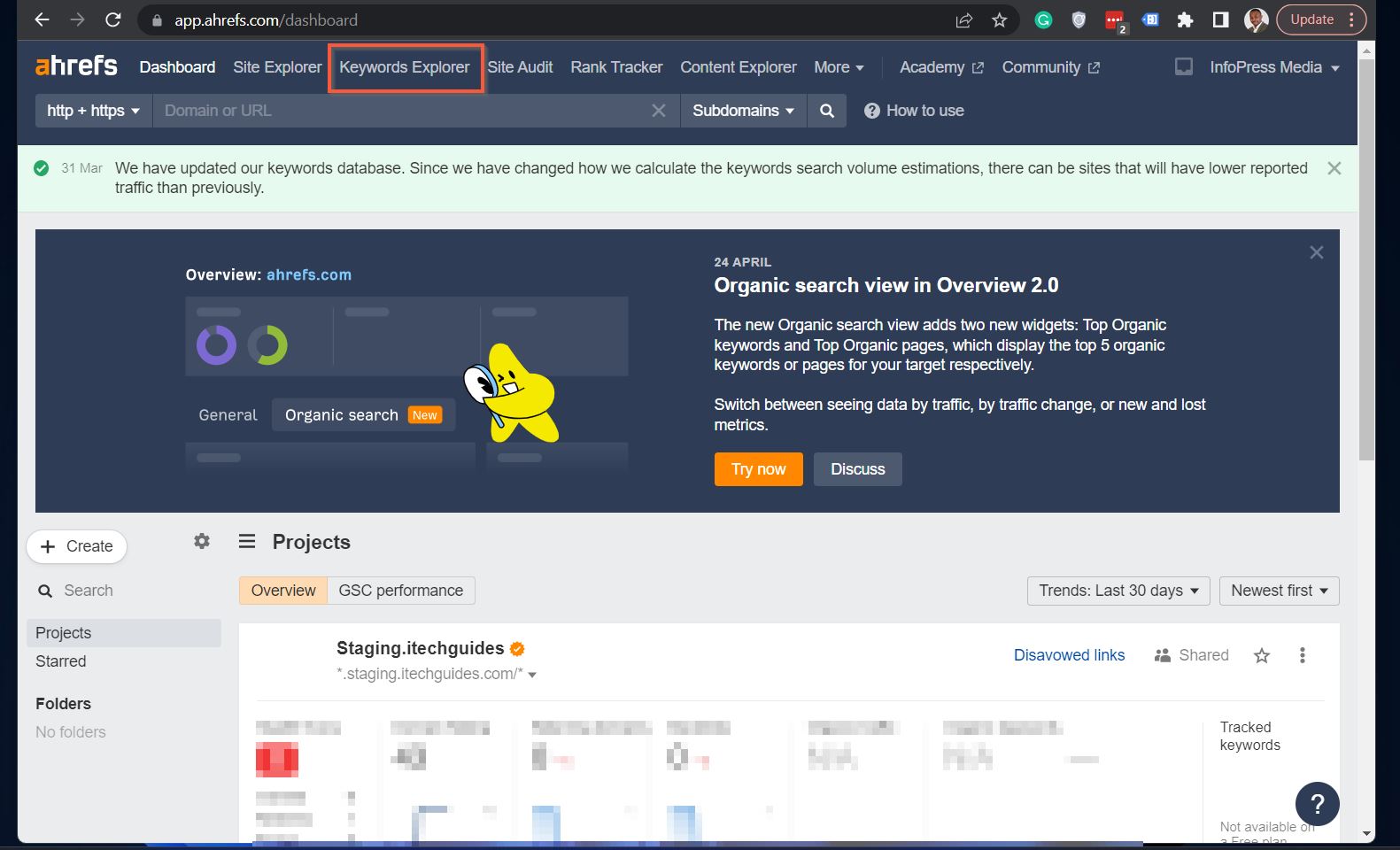
Enter your first keyword idea into Ahref’s Keyword Explorer. Then, filter by volume, word count, and/or keyword difficulty.
When you have filtered the result, export it to Excel.
Then, click Site Explorer and enter your first competitor's website (domain name).
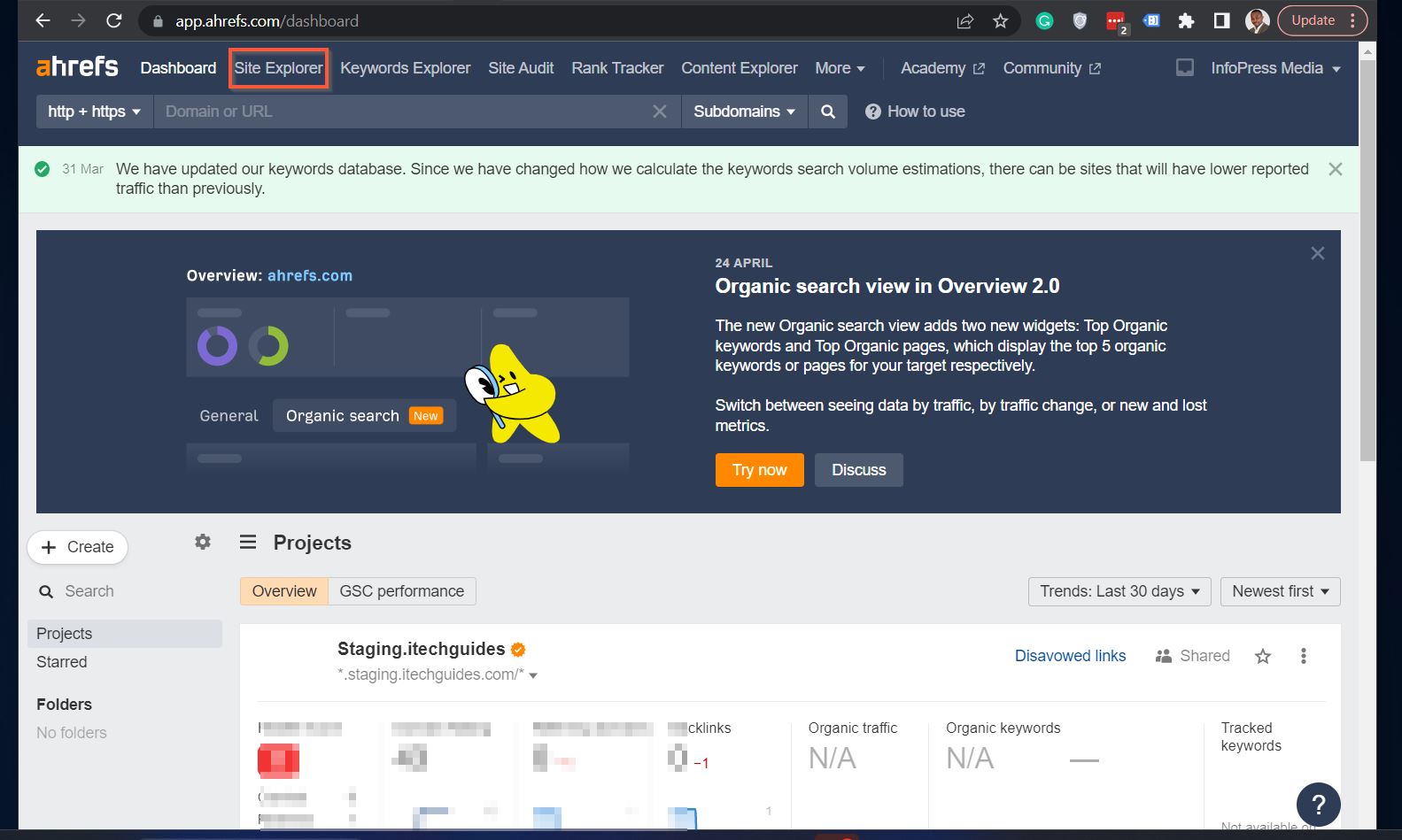
Next, click the search icon, navigate to the “Organic search” section, and click Organic keywords.
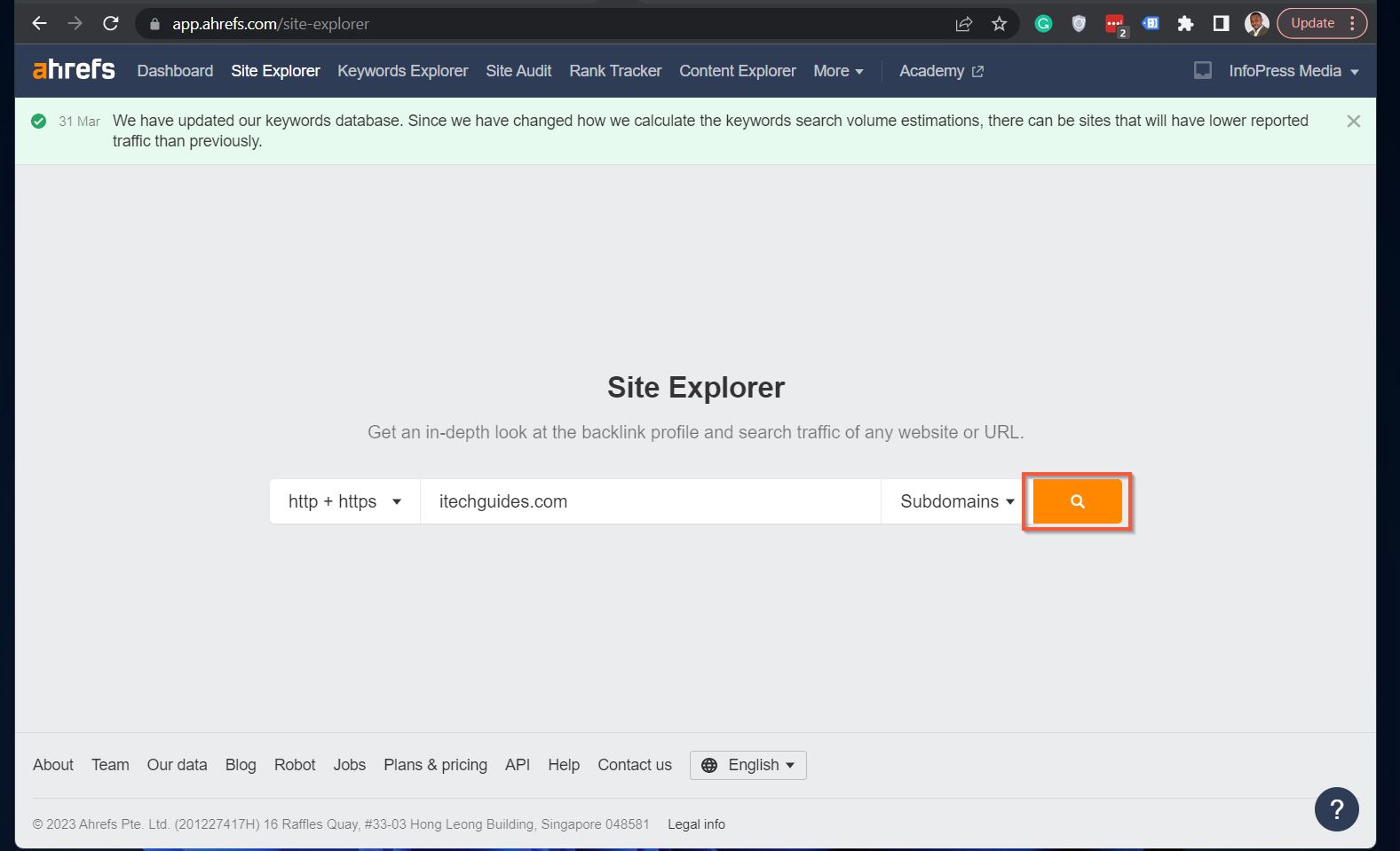
You can also click the Content gap to perform content gap keyword analysis.
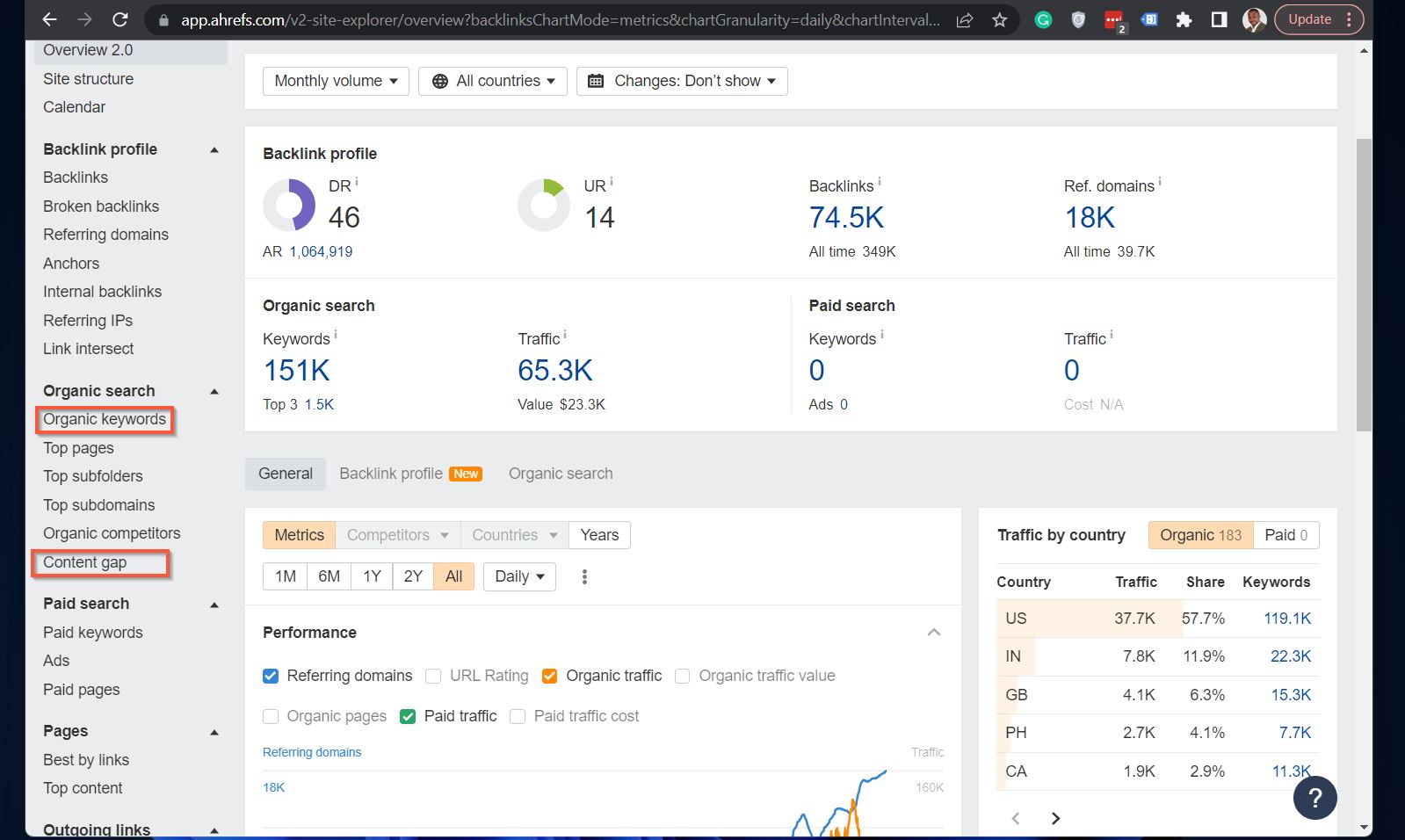
Next, filter your result (see the screenshot below) by Country (1), Volume (2), Keyword Difficulty (3), Word Count (4), or Keywords (5). Finally, export your keyword to Microsoft Excel (6).
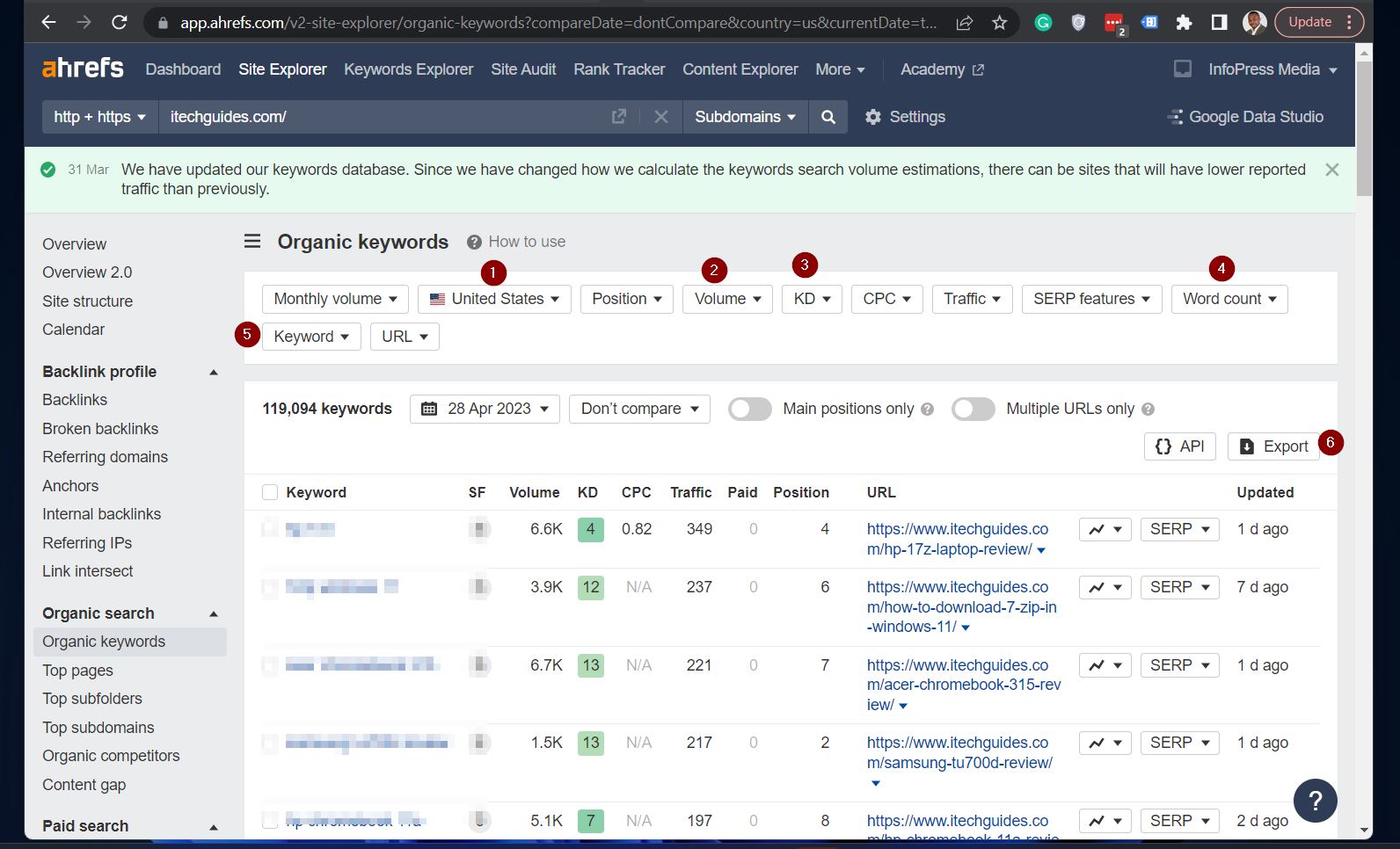
Conclusion and Future Topics
Conducting keyword research is an essential aspect of developing effective SEO content. By using reliable tools and following a few simple steps, you can identify the right keywords for your content that will help increase your visibility in search engines.
In the next part of this SEO series, we will delve into creating quality content using on-page optimization techniques. We will explore how to write content that appeals to people and search engines by optimizing title tags, meta descriptions, and other on-page elements.
The series will then cover off-page optimization techniques, including how to build high-quality backlinks and other off-page elements that can help increase your website's authority and visibility in search engine results.
Finally, we will explore measuring and tracking SEO performance, including how to track and monitor the success of your SEO efforts using tools like Google Analytics 4 and Search Console.
With a comprehensive understanding of these SEO techniques, you can improve your website's ranking, drive more traffic, and ultimately achieve your digital marketing goals. Good luck!











